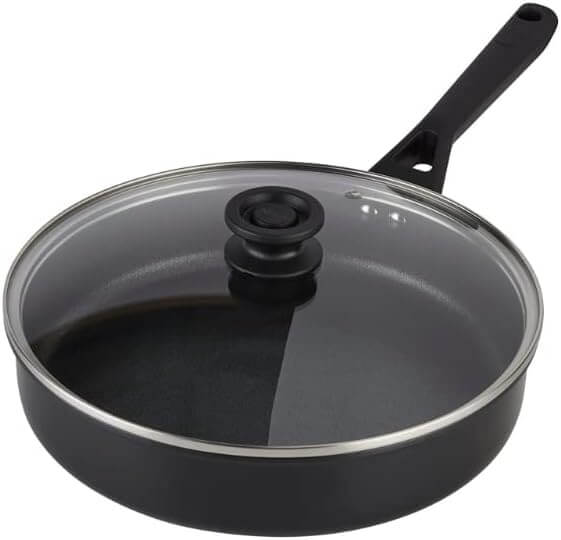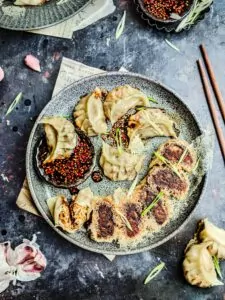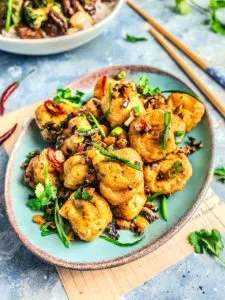Vegetable Gyoza Potstickers, Japanese Vegan Dumplings
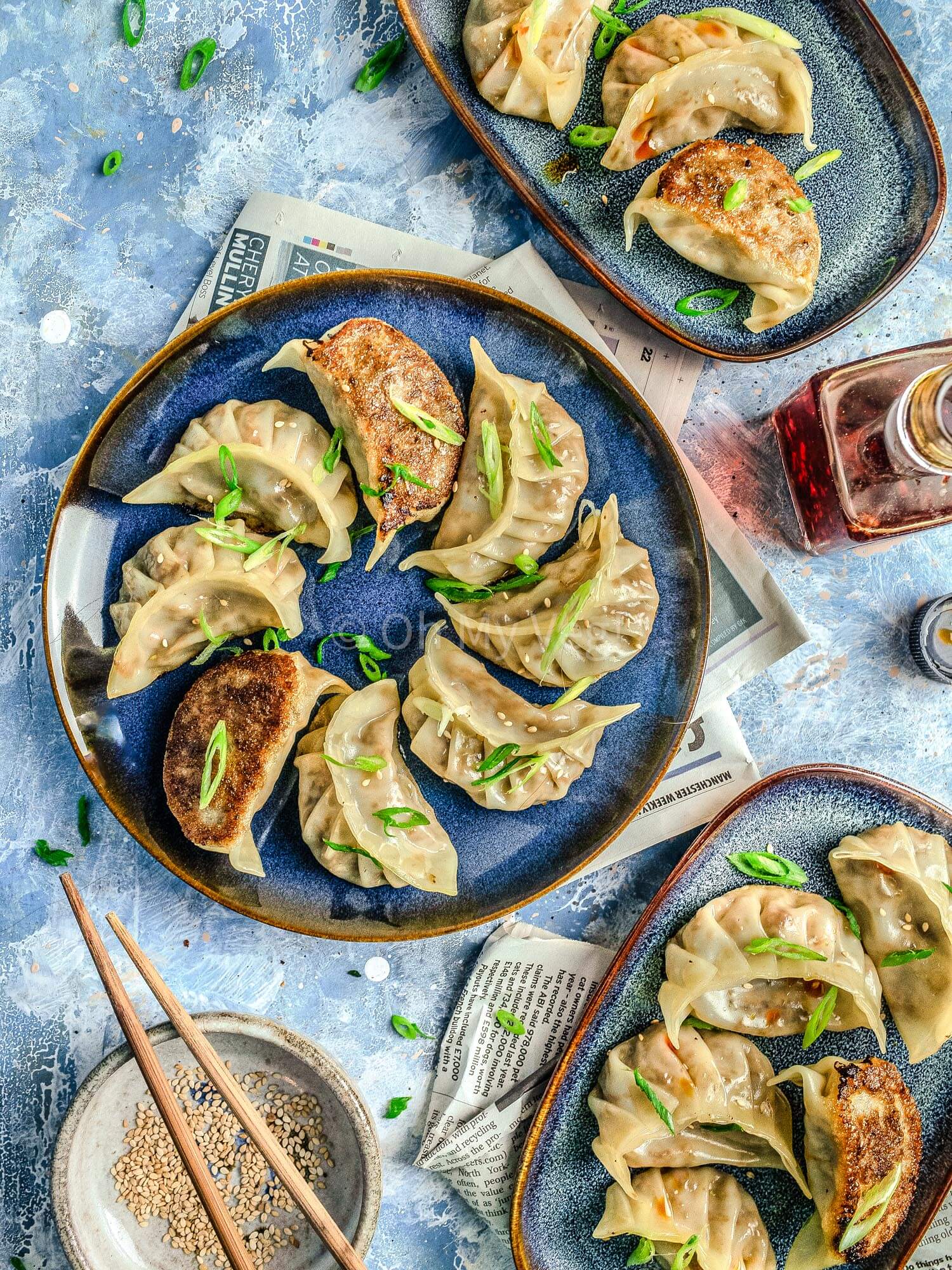
Can you believe I had never tasted Japanese food until recently? I’d always heard that it was seafood-heavy, and my small seaside city didn’t have any of the vegetarian options that chain restaurants like Wagamama, Itsu, or Yo! Sushi boasts. That all changed when I visited San Diego and tried the most amazing vegan gyoza and sushi from The Yasai. From that moment onward, I was hooked on sushi and gyoza — intent on recreating that experience in the comfort of my kitchen. Well, it may have taken me two years, but we’re here: I’ve quite possibly made the best vegetable gyoza recipe.
The vegan vegetable potstickers flaunt a juicy, tender filling — a delicate blend of shredded vegetables infused with a savory, umami-packed soy sauce and loaaaads of flavorful garlic in every bite. No need to worry about vampires!
I rely on store-bought gyoza wrappers to simplify the process, although if you have time, you can always make homemade dumpling wrappers. Light and thin, with my cooking methods, the vegetable potstickers are guaranteed to be perfectly steamed with a tempting golden-brown crust.
Although wrapping the gyoza can take some time, I love to sit down and do this while catching up on my favorite guilty pleasure T.V. show, or I enlist the whole family to wrap with me as part of our bonding time.
If you can believe it, these gorgeous vegetable gyoza are ready in around 30 minutes!
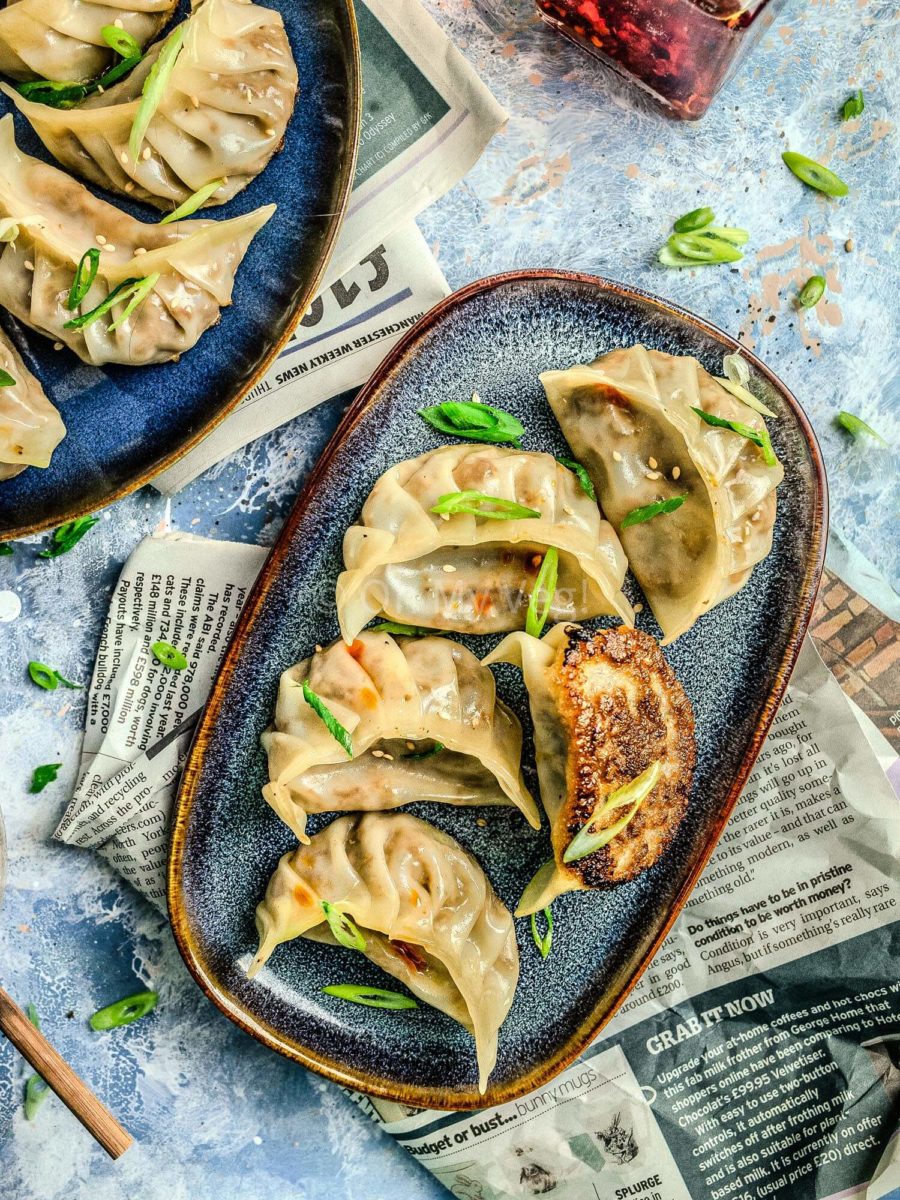
What is Vegetable Gyoza
What is vegetable gyoza? Delicious; that’s what they are!
No, but seriously — gyoza are a variety of Japanese dumplings made with thin wheat-flour wrappers and a finely minced filling typically made from either minced meat or vegetables. Nowadays, though, many restaurants have popularised fun, alternative fillings!
Gyoza can be boiled, steamed, pan-fried, or deep-fried, but we generally use the “potsticker method” to cook them.
Japanese gyoza is closely related to other dumplings like Tibetan momos, Polish pierogi, Korean mandu, and Chinese dim sum.
Where is Gyoza From
Were you aware that, similar to several other celebrated Japanese dishes, gyoza has its roots in Chinese cuisine? The term “gyoza” is believed to have evolved from the Japanese pronunciation of “jiaozi,” a dumpling with a similar shape originating from China.
It’s theorized that Japanese soldiers stumbled upon jiaozi while stationed in China during the Second Sino-Japanese War, during WW2. They must have liked what they tasted since they brought it back to Japan!
Since that time in the late 1940s, gyoza has only grown in popularity, both in Japan and abroad. In the modern day, it’s an essential component of a Japanese meal and probably the most widely recognized Japanese appetizer, aside from sushi.
Are Potstickers and Gyoza the Same?
Technically, no — gyoza and potstickers aren’t the same.
Gyoza are Japanese dumplings that originated from Chinese jiaozi. They have a beautiful curved shape with pleats on the top and feature a simple filling made from minced meat or vegetables with a strong garlic flavor and a delicate, thin wrapper. You can cook gyoza in many ways (boiled, steamed, or fried), but the most popular method is yaki-gyoza, where the vegetable dumplings are pan-fried and then steamed.
Potstickers, on the other hand, are Chinese dumplings with a straighter shape, more rustic wrappers, and a filling seasoned with cooking wine. As you may have guessed by the name, we also cook potstickers by frying them prior to steaming.
Hence, I sometimes refer to this vegan gyoza as “Japanese potstickers” since the cooking method is the same! But technically, there are differences.
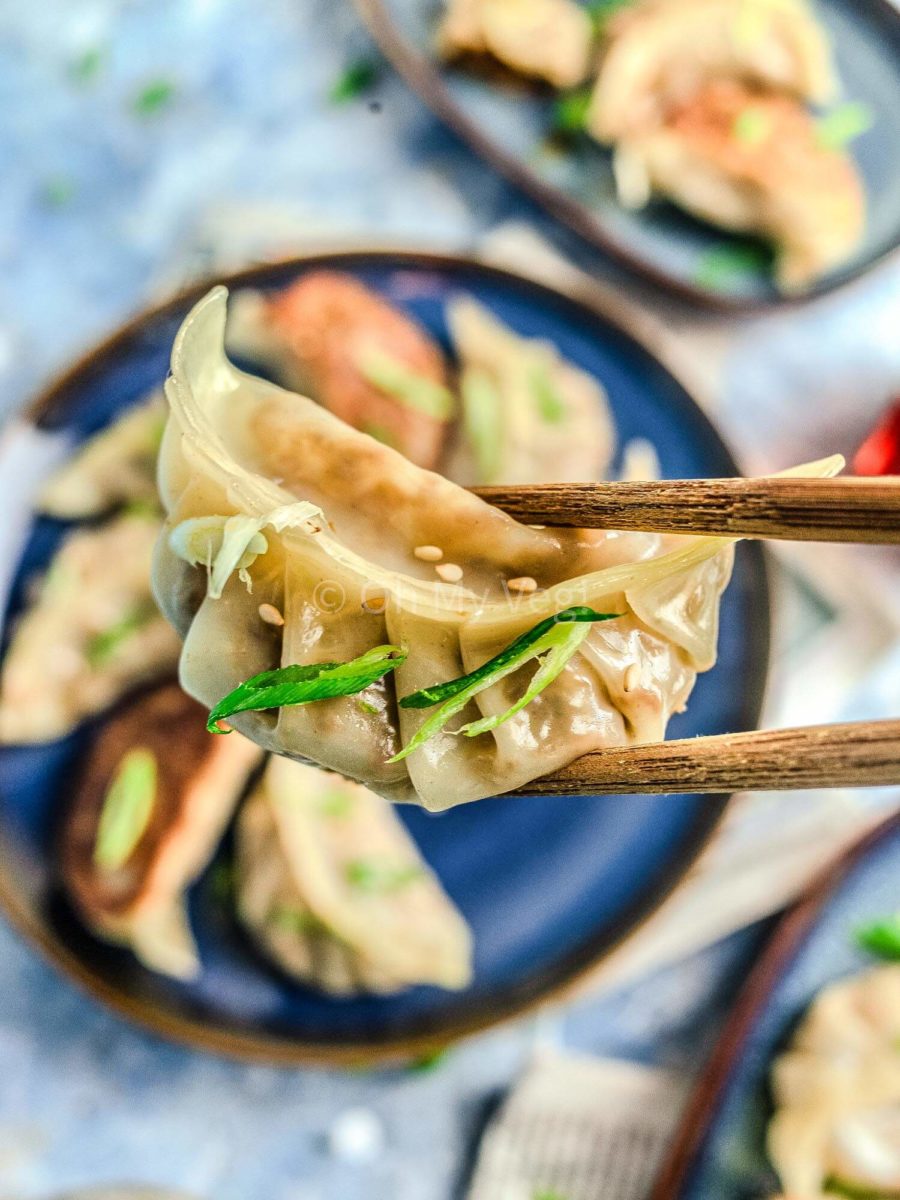
Vegetable Gyoza Allergens
Gyoza is an amazing side dish for parties, events, and large gatherings. However, I always advise people to make vegetarian gyoza, which is by default also halal — this way, as many people as possible can enjoy the dish. Here are some common questions about the allergens in these Japanese potstickers:
- Are vegetable gyoza vegetarian? Every recipe on this website is vegetarian by default. But as for the restaurant and takeout gyoza, I can’t guarantee it. If you’re wondering, does vegetable gyoza have meat? These don’t — but many restaurant or takeout vegetable gyoza do contain minced meat in addition to vegetables. Always check the menu signage for a (v) or (ve) sign and ask your server. That’s why I always prefer homemade vegetable potstickers — it’s far less stressful!
- Are vegetable gyoza vegan? This recipe for vegetable potstickers is entirely vegan! The dumpling wrappers and the filling are 100% plant-based. However, not all vegetable gyoza are vegan or even vegetarian, as some store-bought wrappers contain egg, and the potsticker stuffing can sometimes have oyster sauce.
- Are vegetable gyoza gluten-free? Unfortunately, these vegetable potstickers are not gluten-free since the dumpling wrappers contain wheat flour.
Plus, these vegetable gyoza are nut-free! Can you believe that this recipe is not just vegetarian and vegan, it’s also nut-free? It’s the definition of a crowd-pleasing appetizer!
What is Vegetable Gyoza Made Of
Asian food has a bit of a reputation for long ingredient lists, but to make this homemade vegetable gyoza you only need a few pantry staples. For the quantities, please see the full recipe below!
- Gyoza wrappers are essential for this recipe! Use store-bought vegan wrappers or make homemade dumpling wrappers with flour, salt, and water. Either way, be sure to use round wrappers, as you won’t be able to fold the potstickers with square wrappers.
- Carrots add vibrancy and a natural sweetness to the dumpling filling.
- Cabbage is a great way to add juiciness to your vegetable gyoza. I use shredded white cabbage, but you can read below for substitutes.
- Onion boasts the umami of these Japanese potstickers.
- Mushrooms add to the savory, umami nature of these vegan dumplings. If you’re not a fan of mushrooms, read on below to discover some substitutes.
- Garlic cloves are a must for the creamy, subtly sweet flavor they bring to the filling. I couldn’t be without them!
- Ginger adds a gentle heat to the dish.
- Oil is needed to get that inviting golden-brown crust on the bottom of the gyoza!
- Salt and pepper is a basic seasoning that you shouldn’t skip! Salt also helps to draw out the moisture.
- Soy sauce is a finishing touch that imbues an intensely rich and salty flavor to the vegetable potstickers.
- Cornstarch (cornflour in the U.K.) ensures the filling remains dry, so there’s no soggy gyoza!
The bold flavor of vegetable gyoza rests on the natural intensity of our chosen vegetables, plus a scant few aromatics that pull their weight. Where you can get creative with amping up the seasonings is in potsticker dipping sauce!
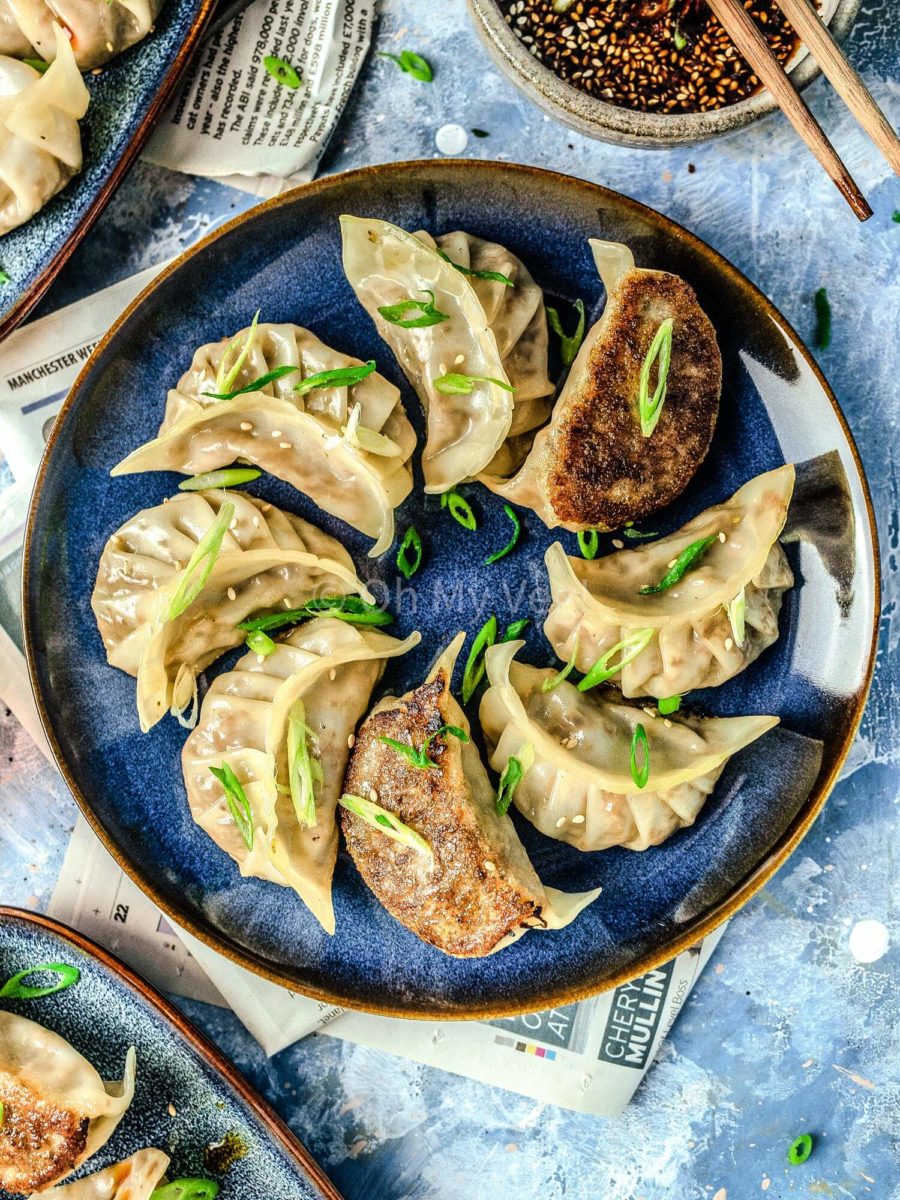
What Can You Put in Vegetable Gyoza
Vegan potstickers are an extremely versatile and adaptable recipe. Although I always recommend following my recipe to the tee the first time you cook this meal, there’s always room for experimentation or adaption for preference and circumstance!
Here are some of my favorites:
- Forgo the mushrooms! If you dislike mushrooms, you can make vegetable gyoza without mushrooms. Replace the umami-rich mushrooms with plant-based pork or shredded tofu for that “meaty” effect, or leave them out entirely and add equal amounts of shredded vegetables.
- Add different greens to the stuffing! While this vegetable dumpling recipe uses white cabbage, kale, brussels sprouts, red cabbage, Napa cabbage, or even savoy cabbage will taste delicious.
- Increase the protein with your favorite plant-based minced meat, shredded tofu, or tempeh.
- Use Asian vegetables like water chestnuts, garlic chives, or daikon radish to add an extra flair. Just be sure to avoid watery vegetables (like pak choi) at all costs!
- Mix up the mushrooms! If you’re a mushroom lover, don’t use ordinary button mushrooms. Experiment with mixtures of exotic mushrooms like shiitake, oyster, maitake, and wood ear mushrooms. Also, check out my fried mushroom wonton recipe — you’ll love it!
As you can see, there are numerous ways to transform this recipe and make it your own. Please share in the comments below if you find a new winning combination!
How to Make Vegetable Gyoza
Don’t be fooled: these vegetable gyoza are almost unbelievably easy to make from scratch. Although the vegan dumplings look fiddly, the process is simple. Here’s an overview — for details, please visit the recipe card below.
- Remove water from the vegetables by squeezing excess water through a cheesecloth and discarding it. This helps the gyoza cook!
- Mix the filling by adding minced vegetables, mushrooms, sea salt, crushed black pepper, garlic, and ginger to a large bowl. Stir well, then add soy sauce and cornstarch (cornflour in the U.K.).
- Fold the gyoza by spooning some filling on the dumpling wrapper, then spreading water around the edge. Fold the wrapper around the vegetable gyoza, then pleat the edges to seal. Repeat!
- Fry the potstickers by adding oil to a large, deep-sided, non-stick frying pan, arranging the vegan gyoza on the bottom, and cooking until they brown on the bottom.
- Steam the vegetable dumplings by adding water to the pan and quickly covering the lid. Cook until the gyoza wrappers are see-through and soft. Turn off the heat and serve with dipping sauce.
That’s it! As you can see, the recipe is straightforward to follow if you break it down into manageable steps.
With practice, making homemade vegetable gyoza should take you no more than 30 minutes!
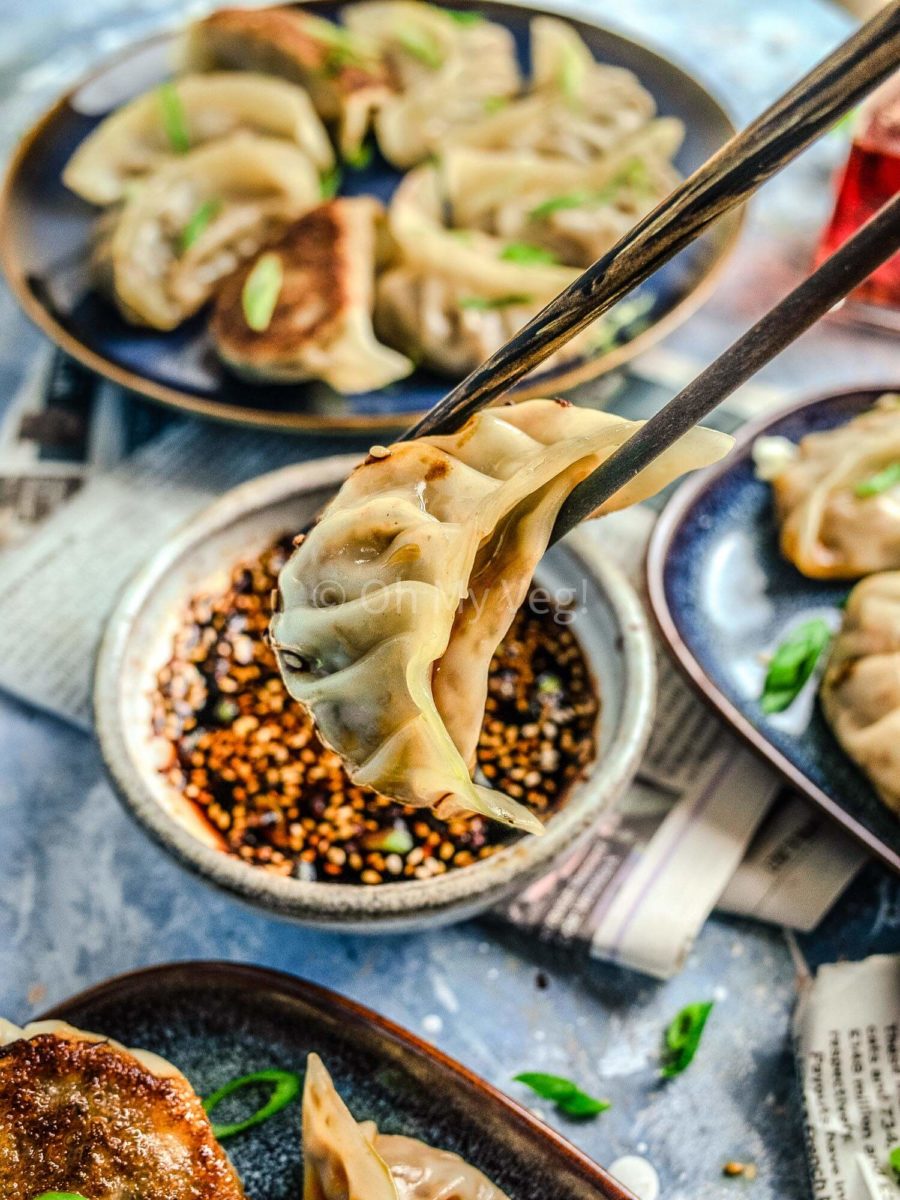
Ways to Cook Vegetable Potstickers
Did you know there are multiple different techniques for making vegetable dumplings? Let’s go over the most popular, widespread methods:
- Make potstickers like I do in this recipe! Although potstickers are a Chinese delicacy, Japanese gyoza makes for excellent potstickers — after all, they’re essentially the same thing, except gyoza tends to be smaller and more delicate. To make potstickers, fry the vegan dumplings to develop a crispy bottom, then steam them to soften the wrappers. Yum!
- Steam the veg gyoza as the healthiest option! You’ll need a traditional bamboo steamer or pot you can insert into a large saucepan. This variety of gyoza is irresistible in Asian dumpling soup or gyoza ramen.
- Deep-fried dumplings are a treat and a half. Entirely crispy on the outside with a fresh and juicy filling, these vegan dumplings are a textural sensation. Still, I prefer leaving the deep-fried dumplings to more robust fillings like these mushroom wontons, as I feel the fresh vegetables benefit from lighter cooking methods.
- Vegetable gyoza in an air-fryer is unexpected but a wholesome solution for crispy dumplings if you don’t want to deep-fry. Lots of people wonder — can you air fry vegetable gyoza? The answer is a resounding yes! However, I don’t recommend making potsticker-style gyoza in the air-fryer.
What to Serve with Vegetable Gyoza
I don’t know about you, but I usually order vegetable gyoza as an appetizer. Dunking the little parcels in a rich and spicy dipping sauce while I wait for my main course is one of life’s greatest pleasures!
So, when I make these homemade vegan potstickers, I always serve them alongside a basic dipping sauce made from rice vinegar, sesame oil, soy sauce, minced garlic, roasted sesame, chili flakes, and a dash of sugar. Of course, you can doctor this up as much as you want.
Alternatively, there’s no reason why vegan dumplings can’t contribute to a main meal, like the ideas below:
- Rice, stir-fried vegetables, and gyoza bowls are a must-try for a restaurant-style meal. If you don’t want to serve vegetable dumplings as an appetizer, steam some rice and stir-fry some green vegetables with plenty of garlic. Arrange it in a bowl with the gyoza, some cucumber salad, and a dipping sauce. Yuuuuuum.
- Noodles with gyoza — I’m talking saucy, stir-fried noodles like vegetable chow mein or the Japanese street food classic, yakisoba noodles.
- Japanese dumpling soup is one of the easiest ways to serve vegetable gyoza. Make a quick soup base from vegetable broth, umami-rich soy sauce, ginger, garlic, sesame oil, spring onions (scallions), and Napa cabbage. You can cook the gyoza directly in the soup instead of making potstickers or add the fried gyoza into the broth afterward. This vegetable gyoza soup makes for a delicious and light lunch!
- Vegan gyoza ramen is one of my all-time favorite restaurant copycat meals. Add gyoza to any of your favorite ramen recipes, and it’s automatically more delicious and filling.
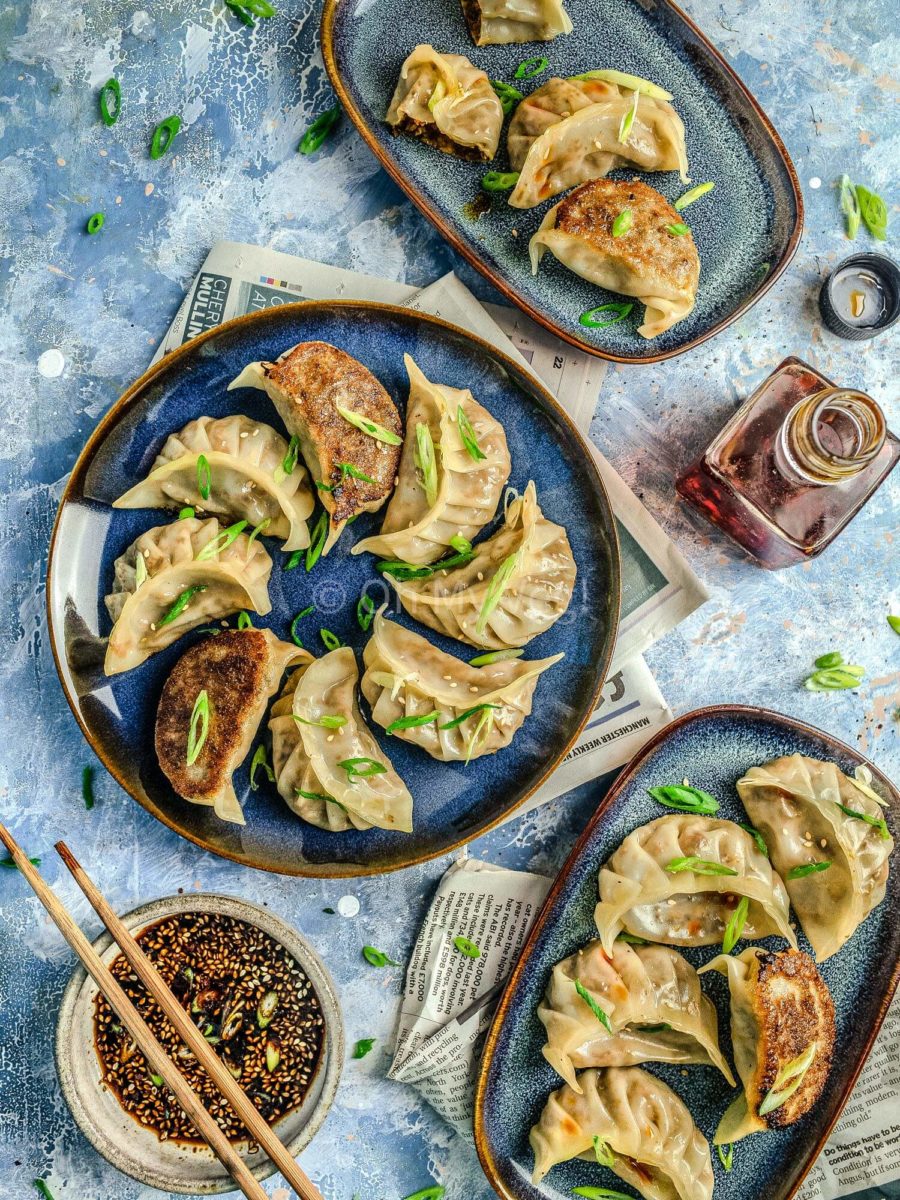
Storing, Freezing, and Reheating Vegetable Potstickers
I always recommend eating food straight after cooking, but there’s one little expectation to this rule. Vegetable gyoza freezes exceptionally well, and the frozen dumplings are a perfect little snack to satisfy food cravings or aid in meal prepping.
Vegetable gyoza is best frozen uncooked. To freeze your vegan potstickers, cover a tray with parchment paper and arrange the gyoza on the tray. Place in the freezer, and once the gyoza has frozen solid, take them out and transfer them to a freezer-safe container or bag. This step is to ensure they don’t stick together! Vegetable gyoza can be frozen for up to three months.
How to cook frozen gyoza? It’s easy! Follow the instructions in the recipe below, cooking from frozen.
If you have leftover cooked gyoza, no worries! Store them in the fridge, covered, for up to three days. You can eat the vegetable gyozas cold or reheat them by gently steaming.
This Recipe Is
- Easy to make
- Vegan, vegetarian, and nut-free
- Adaptable and versatile
- Better than restaurants!
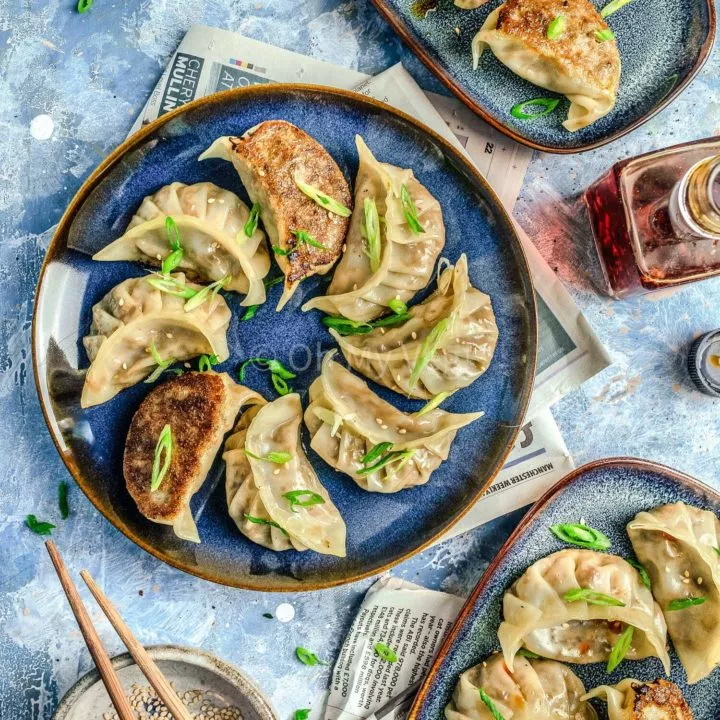
Vegetable Gyoza Potstickers, Japanese Vegan Dumplings
Vegetable gyoza is a vegan Japanese appetizer you have to try! Tender, crispy-on-the-bottom wrappers hold a juicy minced vegetable filling.
Ingredients
Vegetable stuffing
- 2 Medium Carrots (60g), minced
- 100g White Cabbage, shredded
- 1/2 Medium White Onion, minced
- 60g Mixed Mushrooms, minced
- 3 Garlic Cloves, minced
- 1 inch piece Ginger, minced
- Salt and Pepper to taste
- 1 tsp Soy Sauce
- 1 tsp Cornstarch*
For Cooking the Dumplings
- 24 Gyoza Wrappers (roughly)
- 1 tbsp Neutral Oil
- 60ml Water
- 1 tsp Sesame Oil
- Spring Onions, minced, to serve
Instructions
- Remove water from the vegetables. Using a cheesecloth, squeeze any excess water from the cabbage and carrots (the other vegetables should be fine). Discard the excess water — this helps to prevent the vegetable gyoza from becoming soggy.
- Mix the filling. Add the minced vegetables, mushrooms, sea salt, crushed black pepper, garlic, and ginger to a large bowl. Stir well, then add soy sauce and cornstarch (cornflour in the U.K.). The mixture shouldn't appear wet; if it does, add small amounts of cornstarch.
- Fold the gyoza. Spoon a small amount of filling into the middle of the gyoza wrapper. Spread water around the edge, then fold it in half, and carefully pleat the edges. Repeat with all the gyoza. While you're working, cover the gyoza wrappers and the complete gyozas to prevent them from drying out and becoming hard to work with.
- Fry the potstickers**. In a large, deep-sided, non-stick frying pan, heat oil over medium flame. Arrange the vegan potstickers on the bottom of the pan, in a spiral shape. Cook until the gyozas are brown on the bottom, or around 4 minutes.
- Steam the vegetable dumplings. Once the gyoza are nicely browned, quickly add around 60ml of water to the pan and cover immediately. Cook for around 4 minutes***, or until the gyoza wrappers are see-through and soft to the touch. Remove the lid, drizzle sesame oil, and cook for an additional minute or two.
Serve the vegetable potstickers with a traditional dipping sauce or incorporate them into a main meal.
Notes
* As noted in the recipe, you may need a little additional cornstarch to soak up the moisture from the soy sauce. Cornstarch is also called cornflour in the U.K. (Not to be confused with American corn flour.)
** If you don't want to make yaki gyoza (potstickers), you can steam, boil, or deep-fry your vegetable gyoza.
*** If you're cooking the gyozas from frozen, you may need to steam them for up to 6 minutes. They take slightly longer than freshly made vegetable potstickers.
Recommended Products
As an Amazon Associate and member of other affiliate programs, I earn from qualifying purchases.
Nutrition Information:
Yield: 4 Serving Size: 1Amount Per Serving: Calories: 202Total Fat: 6gSaturated Fat: 1gTrans Fat: 0gUnsaturated Fat: 5gCholesterol: 0mgSodium: 318mgCarbohydrates: 32gFiber: 3gSugar: 3gProtein: 5g
Nutrition information isn’t always accurate.


